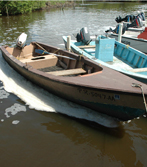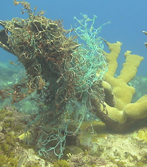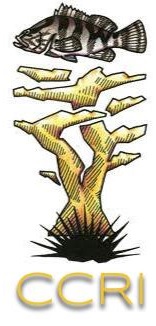
The introduction of chemical contaminants into marine waters due to human activity can result in serious damage to coral ecosystems. Contamination due to petroleum spills, treated and untreated sewage, accumulation of marine debris, heavy metal discharge by industrial plants, and pesticides originating from agricultural activities can affect the water quality surrounding coastal areas and lead to a significant shift in the diversity of coral reefs. Presently in Puerto Rico, nonpoint source pollution in coastal waters caused by sediments, nutrients, and organic and toxic substances is linked to urban runoff and sanitary sewage overflows.
The 1986 oil spill at Bahía Las Minas, Panama polluted Caribbean coastal environments resulting in deleterious effects on shallow subtidal reef s including a total coral cover decline of 76% at depths of 0.5-3 m. In Puerto Rico, early oil spills occurred on the south coast from the tankers Argea Prima (1962) and the Zoe Colocotronis (1973). Off the east coast of Mona Island, the Regina ran aground in 1985. Spilled diesel oil caused direct damage and littered beaches with oil and debris. In 1994, the barge Morris J. Berman ran aground off the northern coast of Puerto Rico spilling 750,000 gallons of No.6 fuel oil that smothered local reefs. An additional 125,000 gallons of oil was release when the barge was sunk in deep water, resulting in contamination of reefs all along the north coast. Coral reefs located near areas such as Guayanilla, Jobos Bay and Guayama are at particular risk due to the high traffic of tanker vessels and barges associated with refineries and power plants.

On August 20, 2007, patches of a type of Bunker C oil of unknown origin spanned approximately 500 ft wide off the southwestern shore of Puerto Rico. The unreported oil spill affected mangrove forests, beaches, and coral cays including Gilligan’s Island, Playa Ventana, and La Parguera. Although there was little direct smothering of live corals, the spill may have presented a potential threat to the eggs and larvae of mass-spawning reef-building corals such as Acropora and Montastrea that occurred during August and September of that year. The response to this large oil spill took approximately one month, some areas could not be thoroughly cleaned, and there is no on-going or planned scientific research to characterize the extent of damage or environmental impact on coastal ecosystems.
The use of large volumes of seawater to cool various thermoelectric power plants in Puerto Rico have had significant impacts upon mangrove proproot and seagrass communities within the coastal lagoons in the immediate vicinity of thermal discharges. There is a continued concern for the discharge of thermal effluents higher than 90oF that can reach up to 110oF during the summer months due to increases in energy demand. Effluent waters with higher temperatures may affect growth of coastal ecosystems such as mangrove wetlands and coral reefs. Entrainment of zooplankton affected mostly estuarine populations of copepods and larval stages of benthic invertebrates and fishes. Based on recent analyses, entrainment has reduced and is unlikely to have a measurable ecological effect on zooplankton and fish communities although most water quality standards are directed towards human health and not necessarily adequate to maintain coral health.
Several management plans such as the Puerto Rico Coastal Nonpoint Pollution Control Plan and other EPA-mandated monitoring programs have been implemented to help supervise environmental issues in Puerto Rico.
